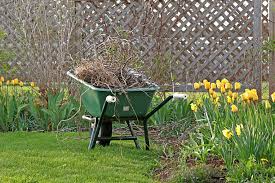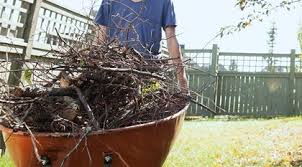By Becky Novak
Spring is in the air!! If you are anything like me, you are itching to get outside and enjoy your yard and start your garden. Its time to put away our snow shovels and replace them with our garden trowels. It may seem like a daunting task but I am here to help you simplify the process.
Let’s start with your lawn. There are six easy steps to ensure a beautiful yard all season long.
1. Do some cleaning.
The first step to prepping your lawn for spring is to clean up the leaves, twigs and other debris that have gathered over the winter. Rakes work, but air blowers are even easier. Getting rid of the debris will help fertilizer reach the grass.
2. Apply fertilizer, pre-emergent and weed killer.
Early in spring, use a combination of fertilizer, which feeds your grass, and pre-emergent, an herbicide used to prevent crabgrass. Then, six to eight weeks later, apply both products again, along with a broadleaf weed killer. Stay on top of crabgrass so you don’t have to fight it all year. Most fertilizer brands have a spring mix that includes everything you need.
3. Mow early, mow often.
One of the big mistakes homeowners make is only mowing once a week in the spring. If you let the grass grow too high and then cut it, it stunts the roots so they can’t reproduce properly. Instead, mow every five days for the first six weeks of spring, depending on the weather, to ensure a thicker, fuller lawn.
4. Pick a good, heavy mulch.
Once your lawn is cared for, edge out your beds, trim back dead branches on shrubs and replace the mulch. I prefer hardwood bark mulches over ground wood chips that have been dyed brown. They look better and they last longer.
5. Trim the trees.
It’s hard to tell if a tree has dead branches unless you get up into it, If dead branches are left untended, they can fall, causing property damage and potential injury. Consider hiring a tree trimmer to do a “safety prune” once every three years — ideally before the leaves come out, when it’s easier to see the condition of the branches.
6. Don’t seed until fall.
It’s tempting to fill brown patches with grass seed, but if you are also applying pre-emergent or weed killer, the seeds won’t germinate. Instead, fertilize the lawn, and in a few weeks shoots will grow and fill in the brown spots, If the brown patches are too big, or you just can’t wait, sod is the better option.
Stay tuned for the next edition. We will talk about prepping your veggie and flower gardens. Don’t forget to start your seeds this week! Until next time…happy gardening and think spring!!






